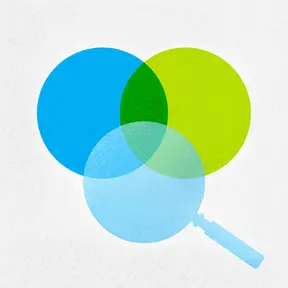

Four Reasons 2020 was a Banner Year for Symbolic Gift Fundraising
2020 was not a great year for many things. But it was in fact a banner year for many of the organizations fundraising with symbolic gifts using our platform. This isn't unique to symbolic giving-- other retail fundraising channels like email fundraising and direct mail also had surprisingly good years. But the Capellic platform gives us some particular insight into the drivers for symbolic giving catalogs. These catalogs (for instance USOwishbook and Unicef) allow donors to support a nonprofit by buying a tangible gift, often for a loved one for a holiday. The gift is presented as a specific product-- for instance, a goat for a family, or a year's worth of medical supplies-- but the donation supports wider programmatic needs for the organization. The donor can then send their loved one an electronic or print card announcing the gift. Nearly all of clients' catalogs performed the same or better than last year, despite worries about the impact of the virus and economy on fundraising. And several of our biggest clients had great years, with sizable increases over any other year. Why was it such a (surprisingly) good year? As a former professional researcher (I was the Executive Director of Idealware for ten years), my immediate instinct was to go talk to clients and other people to find out.
1. More investment in this channel?
The most obvious answer would be that our clients put more resources into their gift catalog program than last year-- for instance, more promotional spending or more hours thinking about campaigns. But that's wasn’t the case. Several mentioned that they spent less online ad dollars than in previous years, but saw a better return. While a few made more use of our campaign features in a way that could, for instance, be a replacement for an online gala, and one made more use of peer-to-peer features, neither of these methods generated a large percentage of their revenue.
2. More discretionary income among upper-middle class and wealthy
Two different people in the retail world told me that it's common knowledge that many retail brands that focus on middle-class and wealthy clientele had very strong years in 2020. I’d love to reference something here, but I’m finding it strangely hard to find public online resources to back up this “common knowledge”. The hypothesis from my sources is that because these folks aren't able to travel, eat out as much, or otherwise spend money during the lockdown, they actually have more discretionary income during the virus. It would follow that more discretionary income would translate into more individual giving... particularly if these people felt (as they hopefully did) that their good fortune should result in more philanthropy. If true, this would likely be a driver of more individual giving across the board, as we in fact saw in 2020.
3. Easy substitute for more traditional physical gifts
The vast majority of symbolic gifts are purchased in November and December, in the traditional gift-giving season. As it was a challenging year to simply go to the mall or downtown to buy gifts, buying a one-size-fits-most gift out of a print catalog or online may have been an convenient replacement. After all, you don't need to worry about the size or the color of a symbolic gift, and they come closer to the tangible appeal of a physical gift than simply a donation in someone's name. Several of our clients had a greater number of somewhat smaller gifts last year, which would be consistent with this hypothesis.
4. More time online, and with print gift catalogs
Many people spent more time in their homes in 2020, with potentially less to do. That might have encouraged them to spend more time looking at our clients' emails and print catalogs (most of our clients send a catalog in paper, and many get a substantive percentage of phone orders that are obviously directly related). This would presumably be a driver of pretty much all digital and direct mail fundraising. So those are my hypotheses about the success of symbolic gift catalogs in 2020. What do you think? I'm very curious about what others have seen-- in particular if others are seeing signs of more discretionary spending by the middle and upper class. That seems to be widespread "common knowledge" that I can't find in online analyst reports. And in general, as Capellic's new Director of Products, I'm putting a lot of thought into how symbolic gifts and other modern fundraising flows can support more donor engagement and conversion, including a complete rebuild of our platform to support flexible donor experiences and storytelling. I'd love to hear what this would mean to you.
